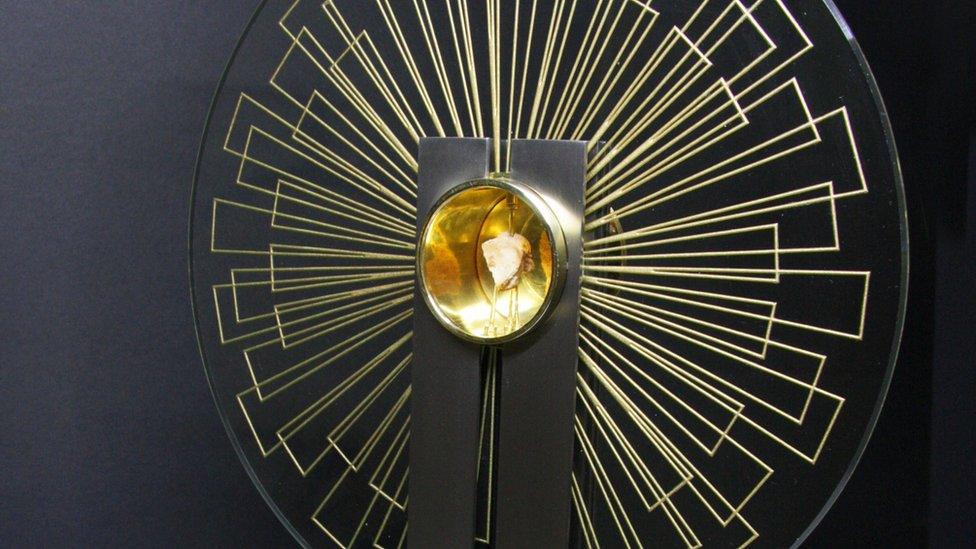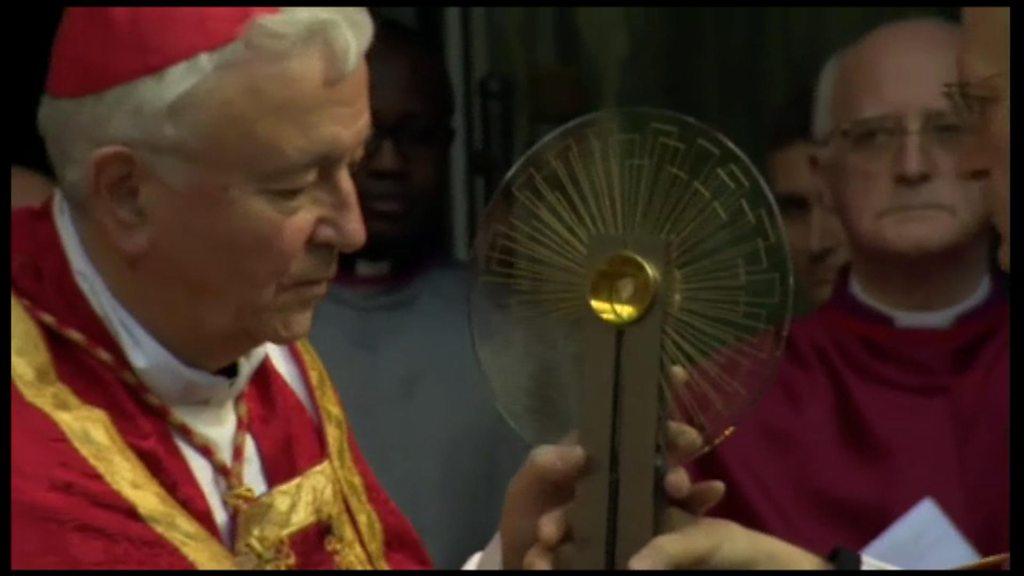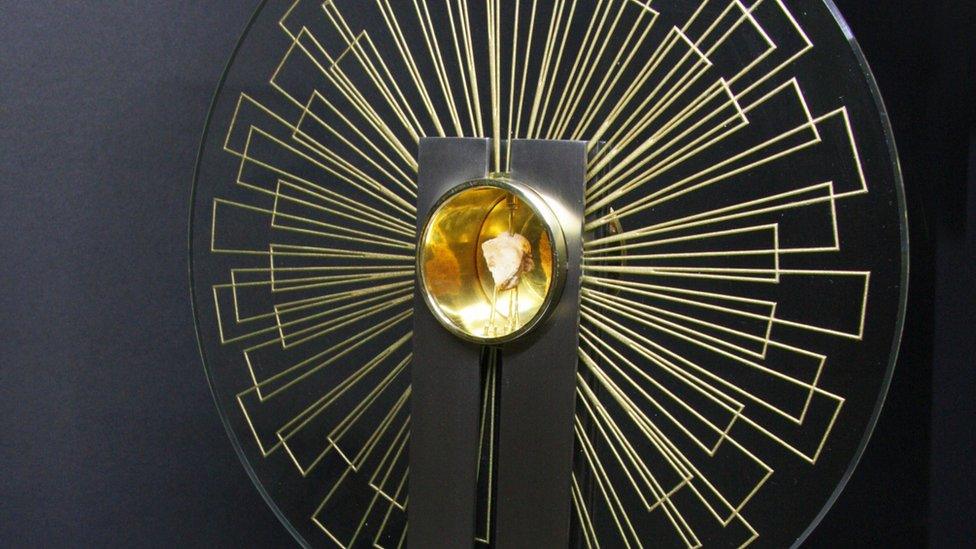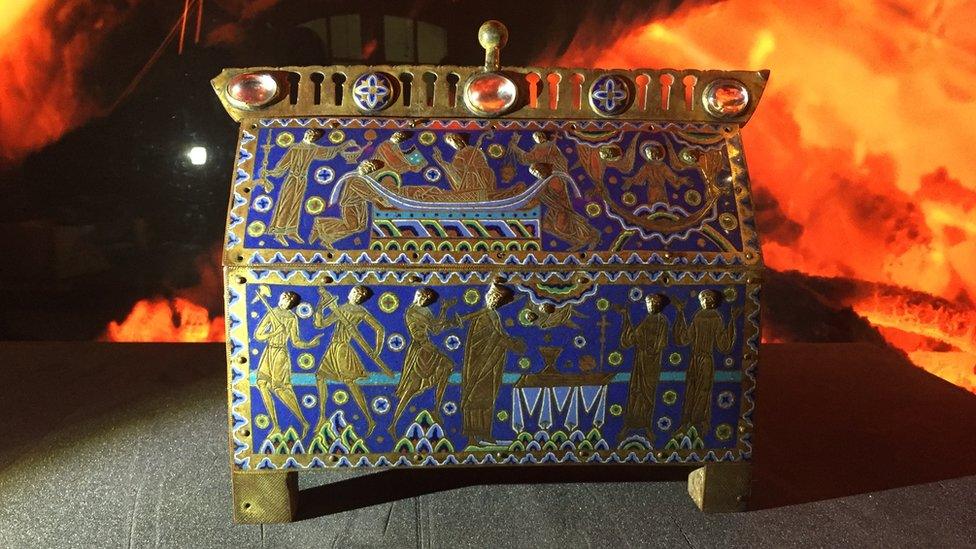Thomas Becket bone fragment carried to Canterbury
- Published

A stained glass window in Canterbury Cathedral commemorates Thomas Becket
A bone believed to be a fragment of St Thomas Becket's elbow has been carried into Canterbury Cathedral, 845 years after he was murdered there.
St Thomas was killed by four knights inside the cathedral in 1170 after he fell out with King Henry II.
Hungarian dignitaries walked with the relic for a mile and a half from a church on the outskirts of the city.
The event ends a week-long pilgrimage, external from Hungary to London and Kent.
The public were invited to join the walk, which left St Michael's church at Harbledown, at 15:00 BST.
There was a short service at the cathedral, external and the relic will be on display in the crypt on Sunday.

The relic is considered to be bone from St Thomas Becket's elbow, taken to Hungary 800 years ago

Edward Bainbridge Copnall's statue at St Paul's Cathedral depicts Thomas Becket's murder

Becket's relic was received at Westminster Cathedral by Cardinal Vincent Nichols
The relic was earlier on display at Westminster Abbey and St Magnus the Martyr Church in Lower Thames Street, London.
It was taken to Rochester Cathedral on Friday and will be returned to Hungary after the events in Canterbury.

Who was Thomas Becket?
King Henry II made his close friend Thomas Becket Archbishop of Canterbury in 1161.
The friendship came under strain when Becket stood up for the church in disagreements with the king.
In 1164, Becket fled to France, returning in 1170.
On the 29 December 1170, four knights, believing the king wanted Becket out of the way, murdered him in Canterbury Cathedral.
Becket was made a saint in 1173 and his shrine in Canterbury Cathedral became a focus for pilgrimage.

Historians say the bone became important to Hungarians as a symbol of Catholic resistance to communism.
It is not known how it arrived in Hungary but two prelates from Hungary were said to have been present in Canterbury Cathedral when Thomas Becket's body was reburied in 1220 and his tomb opened.
The shrine at Canterbury containing most of Becket's remains was destroyed during the reign of Henry VIII when the practice of venerating saints was condemned.
- Published24 May 2016

- Published23 May 2016

- Published29 January 2016
